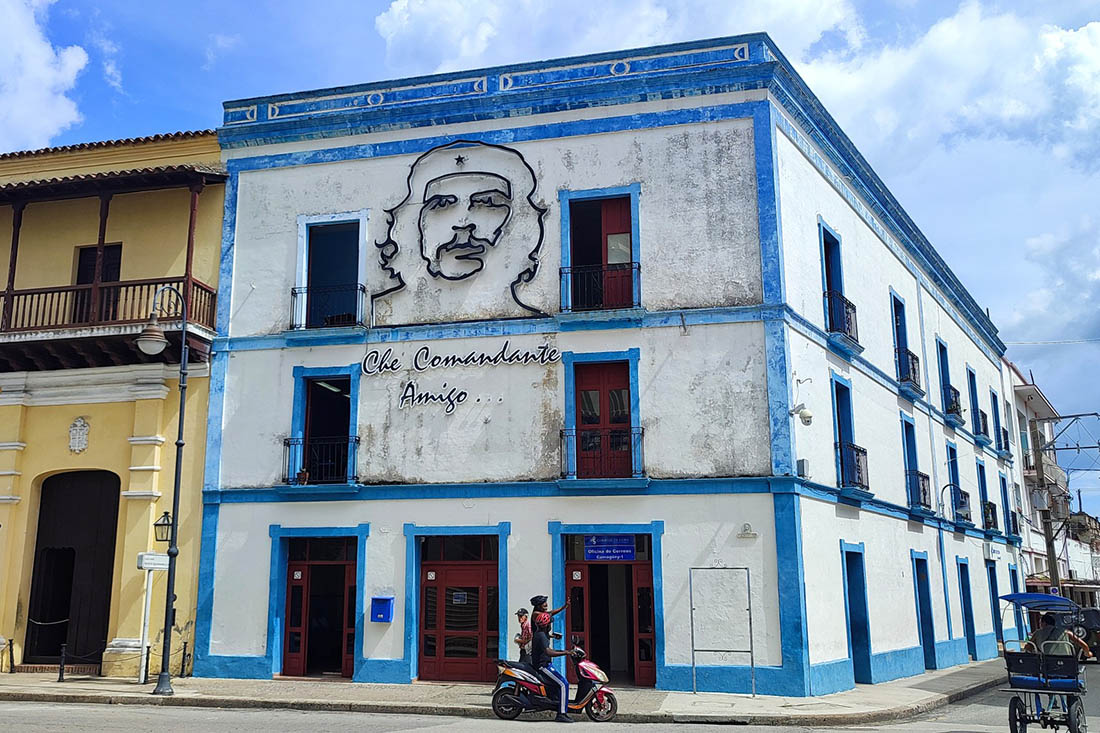This June 14th, if he were alive, the guerrilla Ernesto Guevara would have turned 95 years old. I have thought of him this morning, when passing by Workers’ Square and suddenly notice his gaze that from the top of two buildings in that area of Camagüey invite to fight for victory.
If we stop at the Mercederian Church, when we look up at the Bank building, its image smiles at us with optimism and if we look to our left, from the façade of the post office building, its more familiar face immortalized by Korda’s camera lets see a vis of melancholy, a pensive pose. Two contrasting images.
Looking for his in Camagüey, I decide to go to the one where he is reflective and occupies the entire front view of the Cuban Post Office.
From the entrance
José Luis Estévez Area, a technician from the Post Office Center in Camagüey, received me with natural kindness at the reception of the administrative area. I arrived at the right door, because Pepe, as he is known among his colleagues, has been there for more than 30 years.
When I commented on my desire to know about the image of El Che that the building keeps, he was very enthusiastic, it seems beautiful to him to talk about the rebel from the communications.
The Image and a bit of history
As Pepe recalls, Guevara’s face has been with them since 2008, when the building was rebuilt, but images from 1997 already had the design and looking for information I found out that during the remodeling it was retouched and the lights that make it shine at night were inserted on the idea of its former director Orestes Rodríguez-Gallo.
Then the communicator of the institution, Yudaisis Andrés García, joined us in the curious search to provide other photos of the property from approximately 1920, a time when the ground floor of the Casa Natal de Ignacio Agramonte housed the famous Bar-Correo.
Looking at the snapshots, the Agramonte house turned into a Museum (1973) appears and at that time the post office displayed a giant billboard on its second floor with an image of El Mayor.
We assume
According to some clues, Orestes, when bringing the initiative to place the face of El Che on the post office facade, was inspired by the work of the designer Enrique Ávila, who with 16 tons of cast steel recreates in simple lines the photo of Korda with the face of the rebel in the Revolution Square in Havana. Currently there is the Ministry of the Interior (MININT) and before it was the Ministry of Industries, of which the commander was director.
So the three of us wonder: how did Guevara contribute to communications?
Che as a Communicator
We soon came to this point. Much was paid both in Cuba and in Bolivia, since his diary and rigorous stories, essays and documents, including personal letters, are today published books and have become important witnesses of history.
His direct, realistic and convincing oratory stands out among his communicator skills. In addition, he was the founder of Radio Rebelde from the Sierra Maestra together with Fidel, achieving a great impact on the town.
In 1959, also together with Fidel, he created the Prensa Latina news agency to defend Cuba from smear campaigns by the United States and give Latin America its own voice before the world.
There are plenty of reasons to be proud of having the meditative face of the Argentine-Cuban-Bolivian rebel who, from the high façade of an emblematic building in Camagüey, invites by example to work with dedication and determination.
By day his gaze accompanies us, at night it shines like the star on his guerrilla beret, to remind us that “the only fight that is lost is the one we abandon.”
Translated by: Aileen Álvarez García






